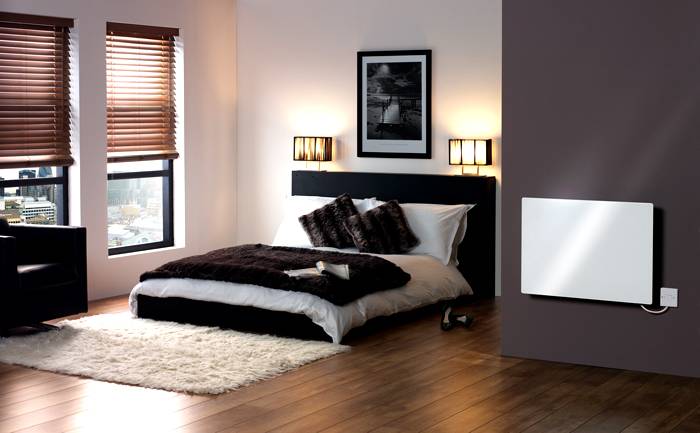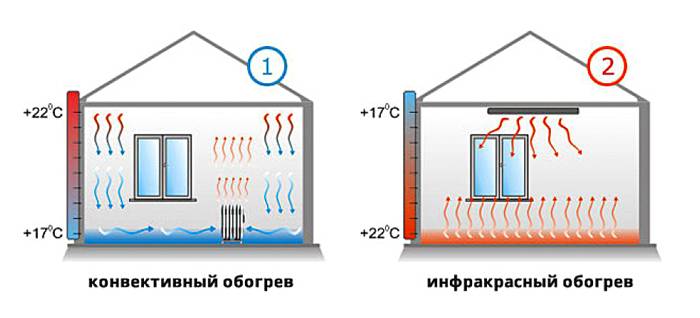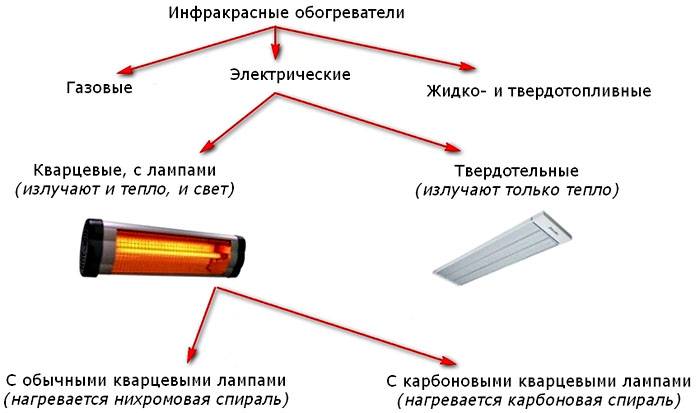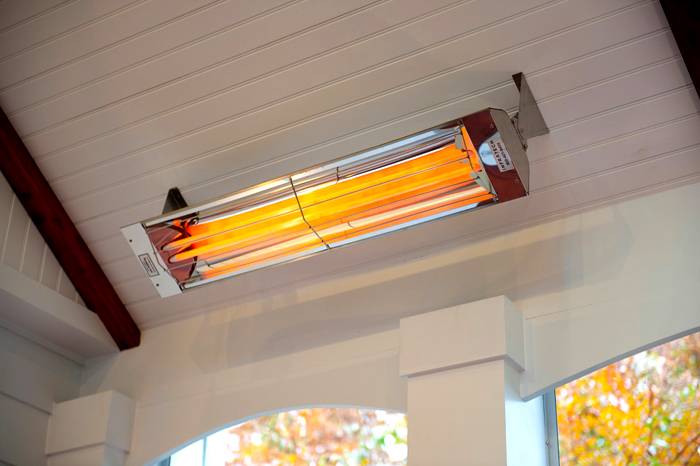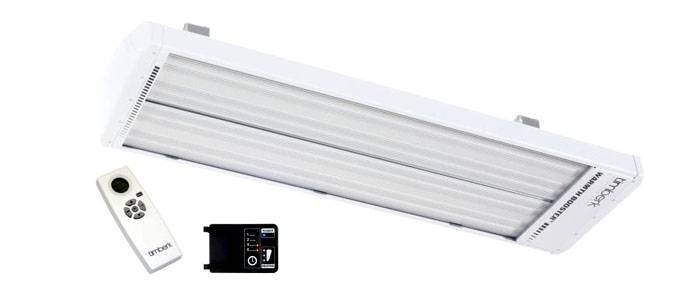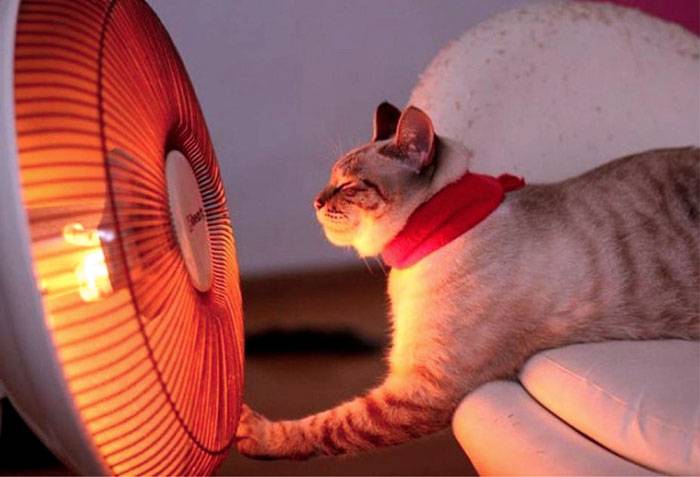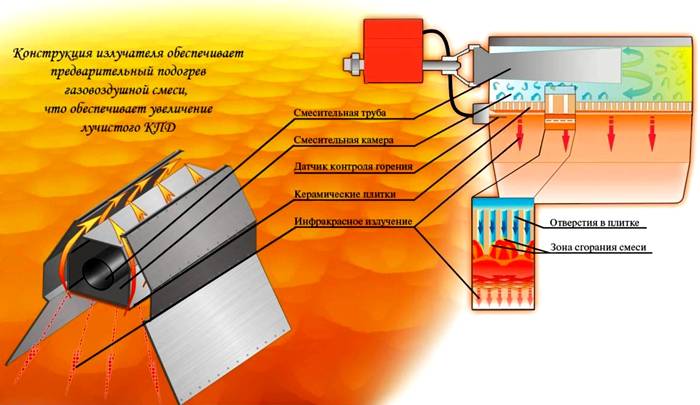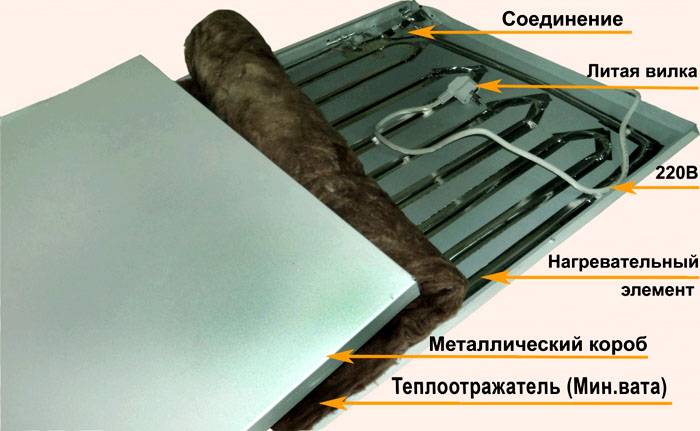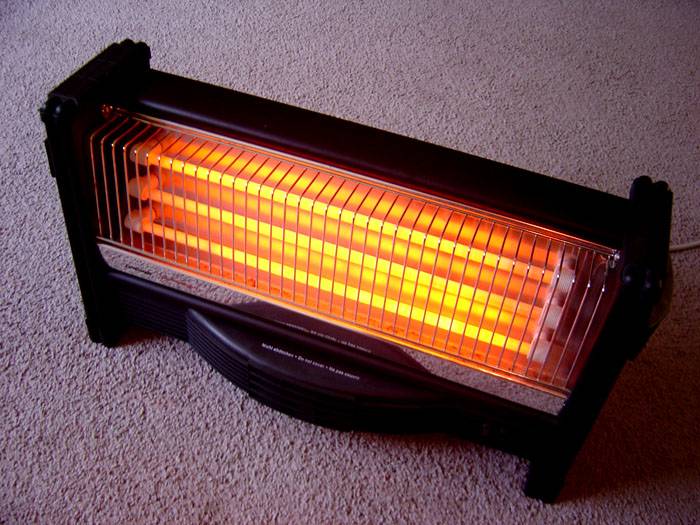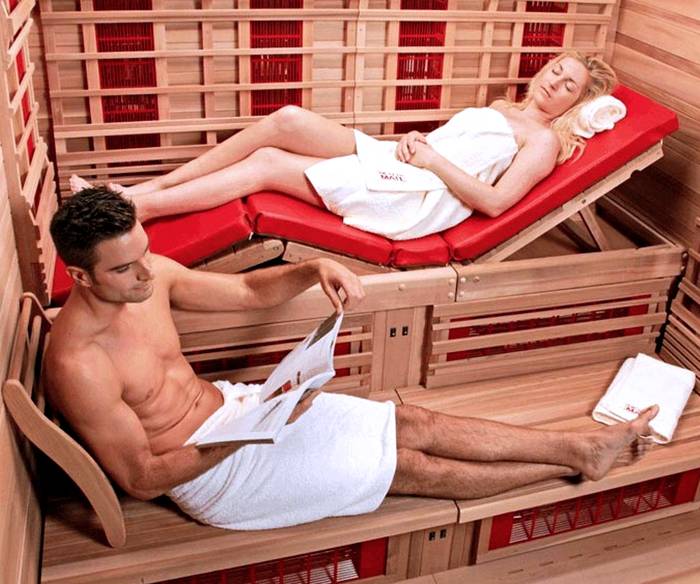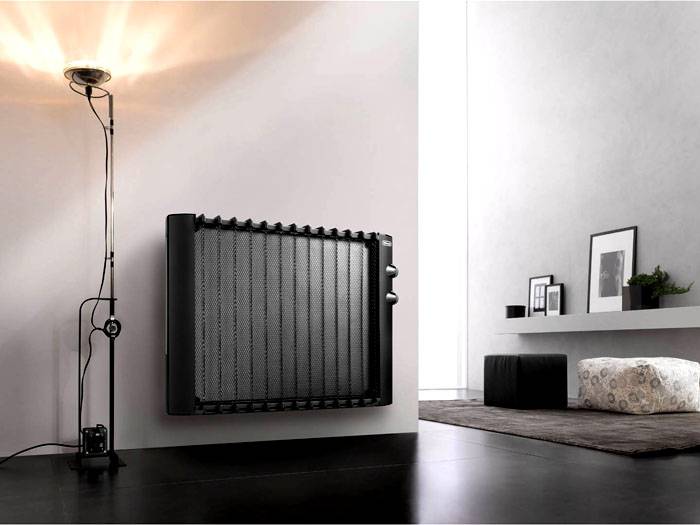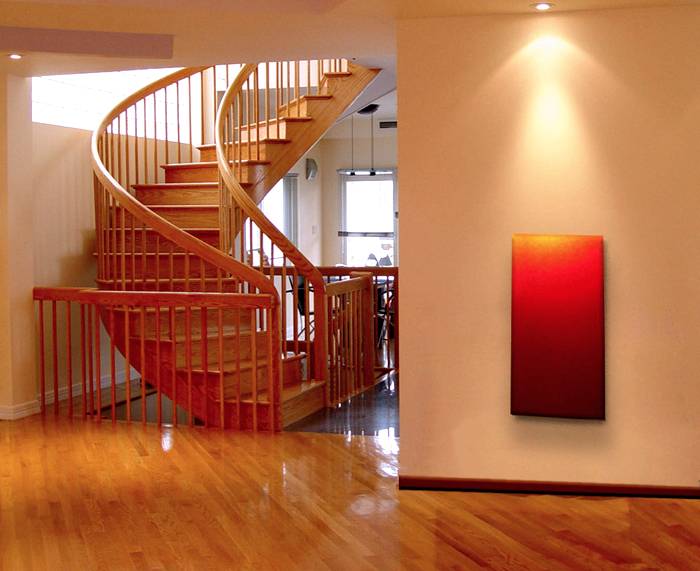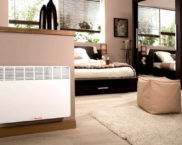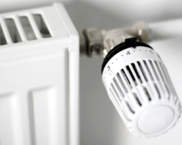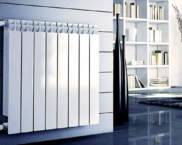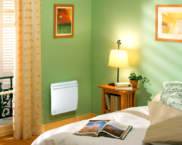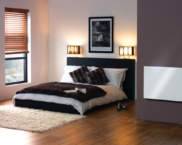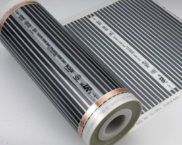Infrared heaters: price, pros and cons of using
Heatersthat use infrared radiation have become especially popular today. Modern models are based on energy-saving technologies. Having carefully studied the pros, cons and the price of infrared heaters, we can say with confidence that these devices are an excellent source of additional heating and may well act as the only source of heat in the house.
The content of the article
The principle of operation and types of infrared heaters
According to experts, infrared heaters - effective, durable and reliable heating means.
The principle of operation of infrared waves and the equipment of the device
IR heaters convert electricity into heat energy by heating. Infrared heat rays heat objects and living organisms.
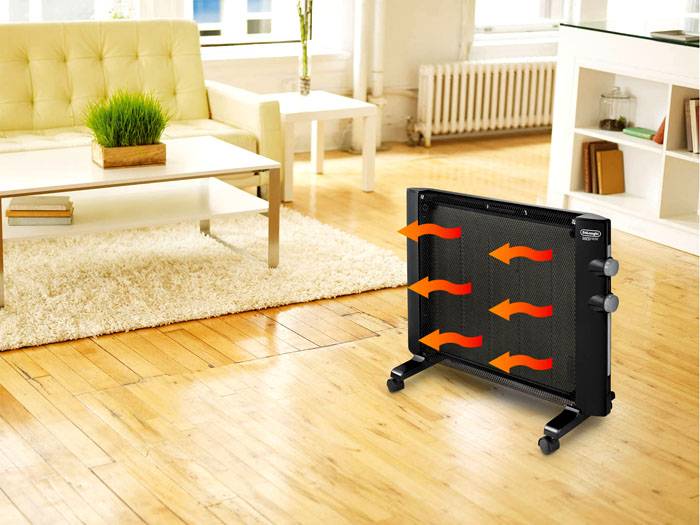
Most of the energy, about ninety percent, goes precisely to heating objects, and only about ten goes to warming the air
Helpful information! Traditional heating systems spend almost all of their energy heating the air in a room.
Objects warmed by infrared irradiation give off heat to the air. That is why heat loss with infrared heating is minimal.
The total surface of all objects in the room is much larger than, for example, the surface of a traditional battery. As a result, infrared irradiation heats the room four times faster. At the same time, the temperature difference between the ceiling and the floor is minimal.
The infrared heater consists of:
- a case with a control unit and a cord for connecting to a power source;
- reflector of cylindrical or parabolic shape;
- a protective mesh made of metal or a transparent partition.
Types and types of devices
IR devices for heating a house are divided into types according to the principle:
- energy use are divided into electric, gas and diesel;
- wave type - there are shortwave and longwave;
- the place of attachment - can be ceiling, floor, wall, mobile.
Infrared heaters: pros and cons, price
When choosing IR heating devices for the home, it is worth considering the advantages and disadvantages of this type of heating.
Pros and cons
Advantages of an infrared heating system:
- fast warm-up big room area;
- no need for maintenance of devices and purchase of consumables;
- environmental safety, the device does not emit toxic substances, does not dry out the air and does not burn out oxygen;
- no need for exhaust ventilation;
- saving resources in comparison with traditional types of heaters;
- electricity consumption from the mains voltage;
Cons of IR heating devices:
- constant heating leads to cracking of the paint in the paintings; for their safety, the use of humidifiers;
- when the device is turned off, the room cools down quickly;
- if the radiation intensity threshold is exceeded, it can cause burns.
Prices and manufacturers
Before considering the list of the most popular models, it is worth dwelling separately on one type of IR heating devices - gas. This relatively new technology allows several times to increase the efficiency of conventional space heating using liquefied gas. These devices quickly heat up the room, do not depend on the supply of electricity. Compact models can work even on small gas cartridges. These are the pros and cons of infrared gas heaters. The price of such devices is very democratic and starts from 520 rubles for a small device that can heat, for example, garden gazebo an area of 40 square meters.
Table 1. The most popular models of infrared heaters according to user surveys
| Picture | Model | Power | type of instalation | Heating area | Price range, rub |
|---|---|---|---|---|---|
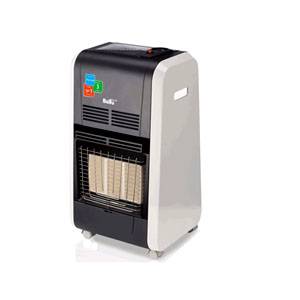 | Ballu BIGH-55 | 4200 Wt | floor | up to 60 m2 | from 5 390 to 7 990 |
| Picture | Model | Power | type of instalation | Heating area | Price range, rub |
|---|---|---|---|---|---|
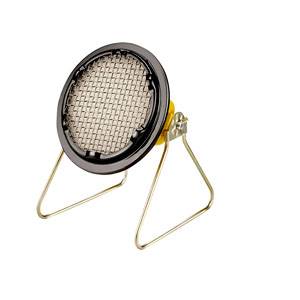 | Ballu BIGH-3 | 3000 watts | floor | up to 30 m2 | from 1,700 to 3,030 |
| Picture | Model | Power | type of instalation | Heating area | Price range, rub |
|---|---|---|---|---|---|
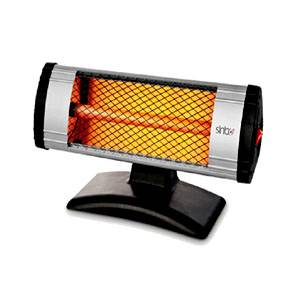 | Sinbo SFH-3309 | 1000 watts | floor wall | up to 10 m2 | 920 to 2,290 |
| Picture | Model | Power | type of instalation | Heating area | Price range, rub |
|---|---|---|---|---|---|
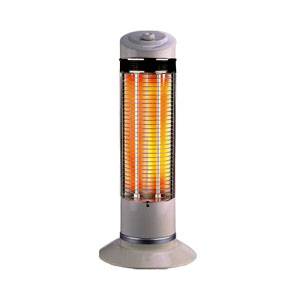 | Zenet HQ-1200B | 1200 watts | floor | up to 10 m2 | from 3 580 to 5 184 |
| Picture | Model | Power | type of instalation | Heating area | Price range, rub |
|---|---|---|---|---|---|
 | Ballu BIH-LW-1.5 | 1500 watts | ceiling | up to 15 m2 | from 1 450 to 2 280 |
| Picture | Model | Power | type of instalation | Heating area | Price range, rub |
|---|---|---|---|---|---|
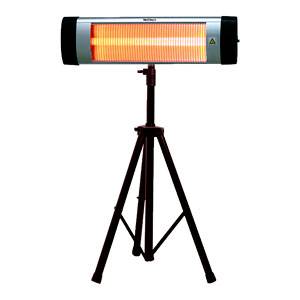 | Neoclima SHAFT-2.0 | 2000 watts | floor wall | up to 20 m2 | from 2 750 to 3 800 |
| Picture | Model | Power | type of instalation | Heating area | Price range, rub |
|---|---|---|---|---|---|
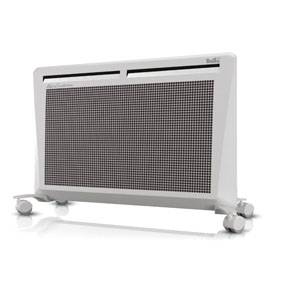 | Electrolux EIH / AG2-1000 E | 1000 watts | floor wall | up to 10 m2 | from 4 240 to 6 200 |
| Picture | Model | Power | type of instalation | Heating area | Price range, rub |
|---|---|---|---|---|---|
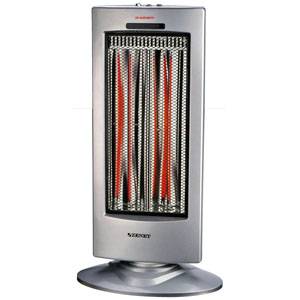 | Zenet NSKT-90A | 900 watts | floor | up to 9 m2 | from 3 699 to 3 701 |
How to choose infrared heaters
Deciding which infrared heater to choose for heating a house or apartment, you should pay attention to the type of heating element of the device. They are of three types:
- quartz;
- metal;
- ceramic.
Helpful information! Halogen infrared heating devices are undesirable to install in residential premises. They emit infrared waves in a short range, which can negatively affect human well-being.
Quartz heating elements are composed of quartz tube and a carbon spiral.Devices with such a heating element heat up quickly and have a high efficiency. Their disadvantage is a relatively short service life, about two to three years. Moreover, they consume a lot of electricity and glow in the dark.
Ceramic heaters are more expensive but last nearly twice as long as quartz heaters. They consume from 50 kilowatts of energy and are considered one of the most economical heating elements.
Heaters based on micathermic metal elements are distinguished by their reliability and durability. In the process, they crackle a little, but otherwise they have only positive feedback from users.
Pros and cons, the price of infrared heaters - not all aspects important for choosing the right device. You should pay attention to a few more features of the infrared device:
- The thickness of the anodizing layer on the heating element. A layer less than twenty-five microns will lead to a rapid failure of the device.
- Appliances with a ferrous metal heating element must not be used in bathrooms and kitchens.
- The foil in the device must be at least one hundred and twenty microns thick. To check, you can press on it with the rod of an ordinary pen. The foil should not deform.
- To heat ten square meters of a room, at least one thousand watts of device power is required. Better to buy a device with a power reserve.
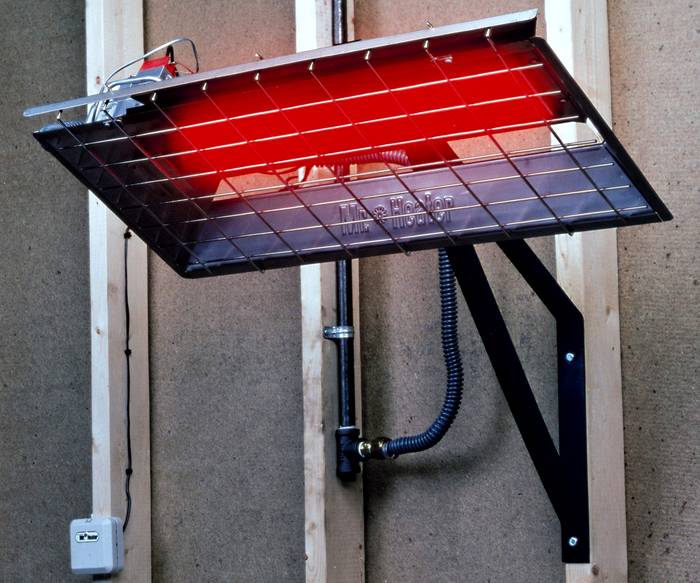
Small appliances with a capacity of three to five hundred watts are great for temporary heating of a garage or workshop
Are infrared heaters harmful to health?
The decisive factor in choosing an IR device should not only be the price. The pros and cons of infrared heaters should also be considered in the context of human health. That is why you should know such important facts about the effects of infrared radiation:
- infrared waves destroy harmful microorganisms and bacteria;
- radiation has a positive effect on the recovery of the body after serious illnesses and injuries;
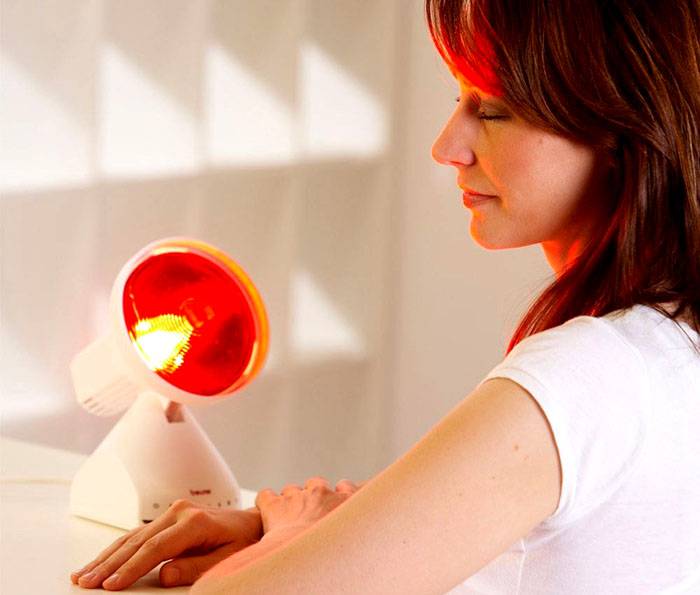
IR waves accelerate the regeneration of damaged tissues, have a beneficial effect on the human nervous system
- with prolonged exposure to IR radiation, the skin and mucous membranes of the eyes dry out;
- IR waves can damage the retina and lens of the eye.
A few final tips for installing an IR device
To avoid harmful effects on the body, it is better to install the IR device under the ceiling, away from the sofa or bed. Do not install this appliance in a children's room or bedroom.
Choosing a device is not worth saving. The reduction in the cost of the heater usually occurs due to the use of cheaper and lower quality materials. An infrared heater, when properly installed, will help you cope with the worst cold weather.



